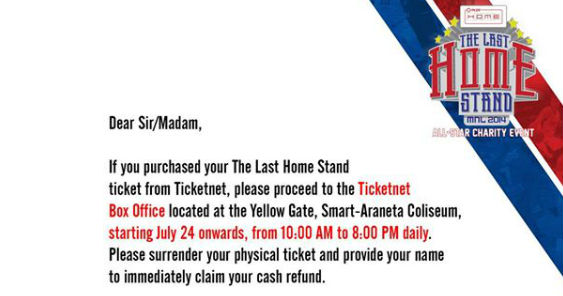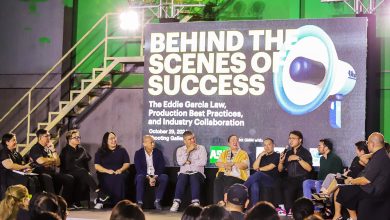Following fan furor over day one of The Last Home Stand charity event, organizer PLDT Home cancelled day two, scheduled for July 23. The event, which was meant to feature an exhibition match between the Philippine national team and players from the NBA, turned out to be a training exercise, to the disappointment and outrage of fans who paid as much as P23,300 for tickets.
A digital post-mortem by Tony Ahn
PLDT Home’s “Last Home Stand” is the country’s latest public relations crisis-du-jour, so let’s examine what happened and compare it to the principles of digital crisis management that I’ve applied to the work I’ve done on the CJ Corona trial, the Padcal Mine spill, the pork barrel scandal, and other crises:
- Communication happens in three directions in the digital realm: brand to individual, individual to brand, and individuals to each other, often while the brand watches. Being effective in this arena requires one to LISTEN and respond promptly, which leads to #2.
- There is an expectation that the brand will communicate in real-time, because we all know they are capable. If that need is unmet, it will cause dissatisfaction at best, suspicion more commonly, and wild allegations at worst. The substance of that communication leads to #3.
- Communications need to be informative. If you fail to fill the information gap, others will, and they may do it through falsehoods in the absence of accurate information. Further, they may do it in a channel you have no control over, like a blog. Uninformative communication can be interpreted as stalling or hiding something. This leads to #4.
- Communicate with your credibility in mind. This means you should be open, as the slightest hint that you may be hiding something will be disastrous. You should also coordinate with affiliated parties to the crisis. And you should be human, as humans have faces and feelings, brands do not. Don’t hide behind corporate-speak; communicate with empathy and concern. Genuine concern for your audience leads to #5.
- Strategy needs to be undertaken from an audience-benefit perspective. How do they feel? Is what we’re offering going to positively affect that? Another way to say it is: what’s in it for them? Is it something they will value?
So now let’s take a look at PLDT’s response to the abrupt cancellation of the Last Home Stand, and apply these principles. The two-day event was scheduled to start at 7pm on July 22. PLDT Chairman Manny V. Pangilinan was quoted stating that he knew the NBA players would not be able to play an exhibition game by that afternoon, and was considering cancelling the event altogether at 5pm.
The event went ahead anyway, and the audience arrived expecting a 7pm start time. After an hour and a half of delay, around 8:30pm, it was announced to the audience on-site at the event that there would be no game, but a training exercise instead. Fans who wanted their money back were entitled to a refund. Fans were reminded that the event was for charity, which appeared to many to be a veiled plea not to request refunds. The Internet exploded with thousands of angry comments made across Twitter, Facebook, online forums, and other social media.
PLDT Home’s first tweet on the matter came about half an hour after the announcement at the event, and stated:
Please hold on to your physical tickets and wait for the official announcement tomorrow via http://t.co/WdhUSQRWhi #GilasLastHOMEStand
— PLDT HOME (@PLDTHome) July 22, 2014
The official announcement released a couple hours later contained a statement from MVP relating his disappointment and promising a full refund to all ticketholders. Social media efforts after that were mostly focused on transmitting refund information.
So what went wrong?
First of all, I want to acknowledge that corporate communications during a crisis are like surgery: there is little room for error, and even with perfect surgical technique, the patient doesn’t always recover. PLDT Home did the best they could with what they had, and this analysis epitomizes the adage that hindsight is 20/20.
PLDT Home primarily used Twitter and Facebook like a megaphone, transmitting one-way announcements. They did respond to comments, but the responses looked like cut-and-pastes of the same script and primarily informed people as to how to get their money back, even if that wasn’t their stated concern. This led to even more frustration and negative sentiment towards the brand.
Their initial tweet was informative. It implied some sort of remedy by asking people to hold onto their physical tickets, it asked them to wait, which let the public know that something is coming, and it set expectations about how long they would need to wait (until tomorrow). However , it was not in real time (PLDT had several hours to plan its response, yet the tweet came half an hour after the live announcement) which allowed netizens to have “first-mover advantage,” leading with their anger after the announcement on-site. Further, it was the first digital communication and offered little empathy for the frustration of the fans (simply prefacing with “We feel your pain,” would have been an improvement). It is almost always best to time a digital announcement to coincide with a live announcement at an event.
Let’s also talk about their strategy. The first decision after receiving the bad news internally was to go ahead with the event. This leads me to wonder if anyone thought about what it would be like to fight rush hour traffic, expecting the excitement of seeing some of your favorite NBA players go head to head with professional Filipino talent, to be told it won’t happen? I would have recommended the event be canceled. Also, it didn’t appear that they coordinated their response with their promoter, East-West Private, LLC whose president stated that the Gilas Last Home Stand was never advertised as a game, despite a) “home stand” being a term for a series of games played at a team’s home stadium, b) the press reporting it as a game and social media talking about it as a game, with the promoter making no move to clarify, and c) smartgilasbasketball.com having an article about Last Home Stand with “Exhibition Game” clearly visible under the headline and in the URL. So much for communicating with credibility in mind! The promoter appears to be making an excuse to escape blame at best, or engaging in outright trickery at worst, neither of which builds credibility with the public.
If you’re in a crisis with one or more other organizations, it is best to both coordinate your response AND plan to have a different response ready if your allied organizations suddenly decide to throw you under the bus. A big part of crisis planning is coming up with all the potential hypothetical scenarios and having a response for them in place and ready.
Many corporate communications professionals explain delays by saying that planning was made difficult by the fact that certain things (like the official statement, and the social media response) could not be drafted until decisions like whether or not the event would be canceled were made, but it doesn’t need to be that way. In the same way that newspapers used to write stories proclaiming both presidential candidates winning an election, and printing the accurate one as soon as the results are announced, a corporate communications department can simultaneously draft plans and responses for multiple decisions, going with the ones apropos to the final decision once it is made. You don’t even have to wait until there is a crisis, which is what dark sites are all about: crisis readiness. Dark sites are crisis websites prepared in anticipation of a crisis, which remain “dark” (offline) and are brought online only when a crisis occurs. It might be a good idea for companies like PLDT Home to have a dark site ready to go in the event of an abrupt event cancellation.
 ABOUT TONY AHN
ABOUT TONY AHN
Tony Ahn began writing his column Ones & Zeroes in adobo magazine’s July-August issue.
Ahn is credited with bringing reputation management to the country after opening the first reputation management consultancy in Manila, which has grown into full-service digital public relations agency Tony Ahn & Co. He also lectures at De La Salle University.
The views and opinions expressed here are solely the author’s own and do not reflect the opinions of adobo magazine.









